A conversation between: Jim Biddulph & Grant Gibson, Material Matters
For anyone with even a mild interest in material innovation the second edition of the Material Matters Fair, which took place in the Bargehouse at Oxo Tower Wharf during last months London Design Festival, was the place to go. Intent on highlighting the significance of ‘material intelligence’ and the many positive applications that can spawn from it, the event is a platform for material innovation worthy of recognition in the annual international calendar of design fairs, exhibitions and events.
Truth be told, it owes a healthy proportion of its clout to a podcast of the same name, which for those who already listen will come as no surprise, and for any new listeners, well, you’re in for a treat. Both entities in the Material Matters world are the invention of Grant Gibson, who initiated the podcast at the beginning of 2019 and launched the fair with William Knight during LDF last year. The podcast follows an interview-format conversation between Grant and a maker or industry professional that has an overview of design, with a common theme in each: materials.

Using a specific material, which more often than not is central to the interviewee’s practice, each episode delves into their career and explores how they work with (although not exclusively) the material in question. Turning the tables on Grant, I caught up after the show to discuss how and why he started Material Matters, beginning with his earlier career as a design journalist.
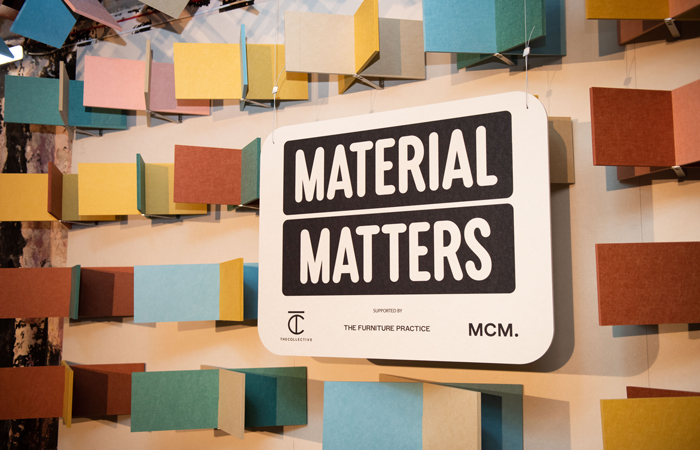
Material Matters. Photo by Max Colson
JB: Your origins as a journalist strike me as integral to your later decision to start a podcast and design fair, so can we start with your life as a design journalist and editor? Could you give an overview of how that all began; who you worked for and the type of projects you covered?
GG: Oh Lord. I always wanted to be a journalist and make magazines – I used to love The Face and Arena, for instance. I left university during a (little talked about) recession and had no idea how to get into publishing.
It so happened that my sister’s then-boyfriend had just landed a job with a small publishing house, called ETP, in Chelmsford near my parents’ house and told me they were looking for people. I was interviewed by a very young Lee Newton (who went on to found Media 10) and offered a post in telesales. I wasn’t great but Lee (bless him) obviously saw something in me and I was offered a junior editorial role on FX, its flagship contract interior design title. I knew nothing about design but quickly realised it was a fascinating place to be. Money started coming back into the economy, a flurry of contemporary bars, restaurants and shops opened and I found myself covering them and having a whale of a time in London.
After five years on FX, the company bought Blueprint and made me editor. In retrospect, I was a couple of years too young for the job but it wasn’t something you could turn down in those days. From there, I worked on a bunch of other titles – as well as launching things like the little red guidebook to the London Design Festival – until I spent a decade editing Crafts.

Material Matters. Photo by Max Colson
JB: Your podcast, Material Matters, is going from strength to strength, with a wonderful array of industry professionals and now over 100 episodes. When and why did the idea of the podcast come about and how did you initially go about setting it all up?
GG: Well, I had a bit of a falling out with the organisation that published Crafts, the Crafts Council, in 2018 and I didn’t have a job (long story). In truth, I should have got out of print years before – the profound change in the media landscape has meant that most editors are managing decline.
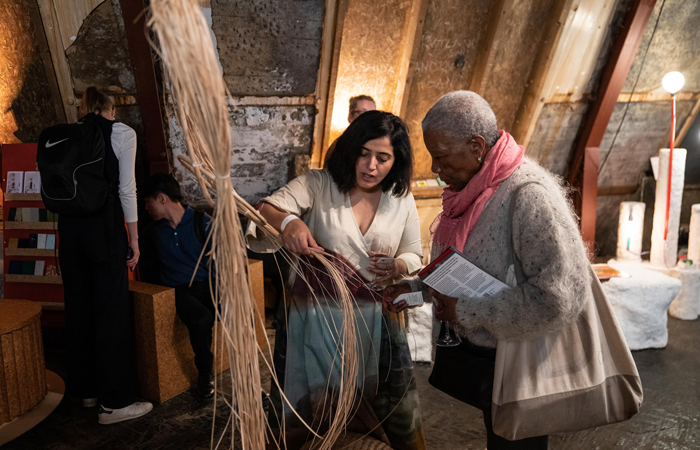
Material Matters. Photo by Sophie Mutevelian
So, I decided to get out of magazines but I didn’t want to write as a freelancer, frankly, I find the amount of rejection you have to accept when you pitch stories a bit depressing. It was a question of creating a brand that was bigger than me on a budget, podcasting seemed a relatively cost-effective way of reaching an audience.
Subsequently, I thought that the interviews needed a common thread to unite them. I’ve always admired Desert Island Discs and shows like (the old) Room 101, where there’s a structure but it works so you learn more about your guest. Materials made sense as it was a subject that allowed me to wander through architecture, design, craft, science, engineering, and other disciplines.
JB: I know from personal experience that there’s a lot of work involved in producing podcasts, something that is perhaps overlooked due to the sheer volume of content available to listen to nowadays. Can you give some insight into your process – how do you actually make it, and most importantly, how do you choose the guests?
GG: Until the pandemic, I would record interviewers – alongside my sound editor, Sam Ryan – in the guest’s studio or workshop. That all changed with the pandemic. Realising I could still record over Zoom and achieve a level of intimacy was a revelation, and it opened the world up to us. They are a lot of work. Each episode is researched assiduously and can take days to put together.
In terms of choosing guests, diversity is key. I try and get a balance of gender, backgrounds, disciplines and materials. It’s quite tricky and you have to be careful. For example, someone once complained that I only interviewed people who’d studied at the Royal College of Art. It wasn’t strictly true but I do now look quite closely at where guests have been educated. I also try and give each series an international flavour.
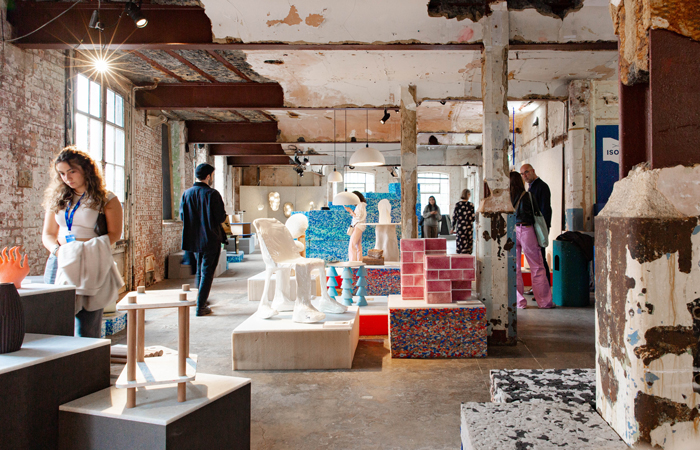
Material Matters. Photo by Anwyn Howarth
JB: Given the drive to be more sustainable in how we make and manufacture, are there any materials that you consider “off the table”?
GG: Interesting question. Actually no, because I think context is important. I like to say that the podcast is about ‘material intelligence’ rather than sustainability. It provides wiggle room for me to interview someone like the Formula One design legend John Barnard, whose use of carbon fibre changed the sport.
JB: I appreciate the allowance for material diversity and a certain amount of nuanced debate around the potentially positive application of all materials. But have you found an increase in awareness and importantly action from your guests regarding how ‘ecologically sound’, and by extension, ‘sociologically sound’ their practice is?
GG: Many of the episodes do focus on sustainability or social issues. There are numerous examples: Steve Barron is a film and TV director – who directed the Billie Jean video for Michael Jackson among other things – but later in life discovered the importance of hemp, bought his own farm and built his farmhouse from the material.
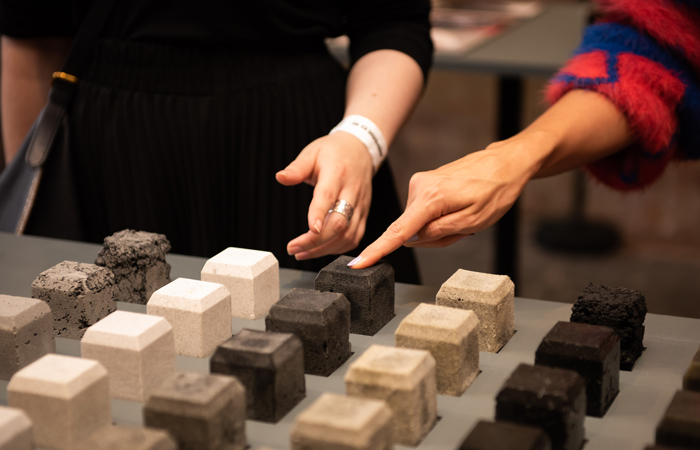
Material Matters. Photo by Max Colson
Thomas Thwaites tried to build his own toaster by hand, even mining his own minerals. His story shows, on one hand, how reliant we are on industrial processes for the gadgets we use every day, and on the other the environmental havoc those processes can wreak. Then there was an episode with the journalist and writer Peter Apps discussing his heartbreaking book, Show Me the Bodies, on the Grenfell Tower disaster and how Aluminium Composite Material came to clad the building. There are so many lessons to learn from that.
JB: Once again, I really enjoyed the Material Matters fair during London Design Festival in September. How and when did you conceive of the idea for the fair, and again, can you give some insight into the process of putting it together?
GG: It became clear pretty quickly that there was an audience for the podcast, then it was a question of how to extend the brand. Live events were the obvious answer and it made complete sense to work with William Knight, who I’d known for well over 20 years. He is a former deputy director of the London Design Festival, and had run events like 100% Design and Clerkenwell Design Week so knows how to put events together.
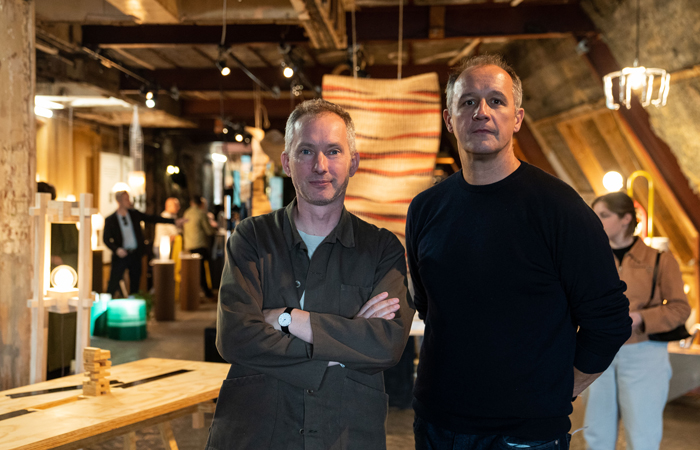
Grant Gibson and William Knight
JB: You mentioned the genealogy there, how interlinked is the fair to the pod? Does one help to feed the other or do they retain some independence and individual distinction? How do you manage this if so?
GG: I think the podcast provides the fair with its philosophical underpinning. William and I were clear when we started the fair that it had to have a purpose. In my view, it isn’t enough just to bring some vaguely contemporary stuff together in a big room. The podcast gave us that purpose.
I guess it also gave us a head start. It wasn’t easy launching. The pandemic was still very present and people were wary of spending marketing money. However, exhibitors understood what we were trying to do because of the podcast.
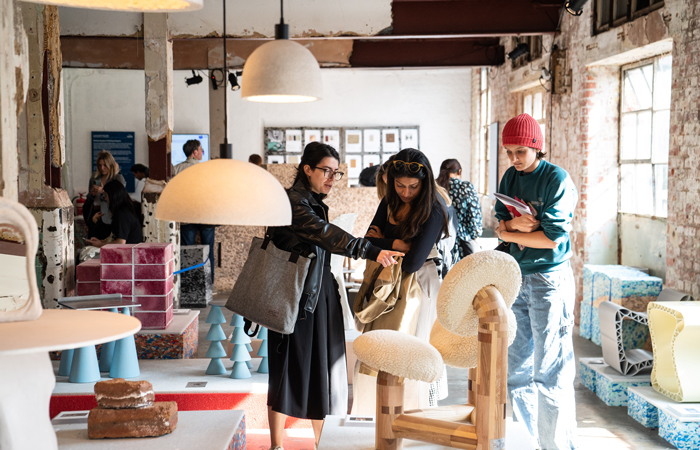
Material Matters. Photo by Sophie Mutevelian
JB: The show was awash with fascinating and impactful design solutions; I particularly enjoyed seeing Isola here in the UK alongside the likes of Pearson Lloyd, Smile Plastics and bioMATTERS. Were there any fresh innovations that have really stuck with you and excite you as future applications?
GG: When you put something like the fair together you become close to all the exhibitors. I feel we’ve created a little community and I’m very fond of them all. There is so much to choose from, but I should point you in the direction of The Tyre Collective, which has created a way to collect the rubber particles created from the friction between car tyres and the road. We all breath these particles in but they have found a way to turn this waste material into products.
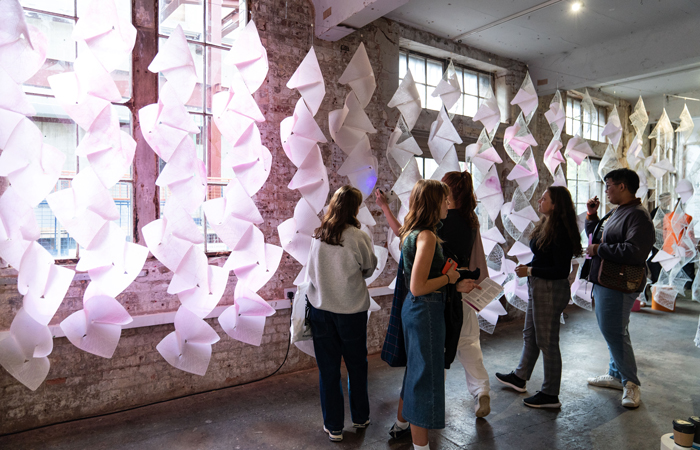
Crafting Plastics! Studio with DumoLab Research, Nuatan bioplastic lattice curtain
Also crafting plastics! studio, working with DumoLab Research, created a lattice curtain made of a Nuatan bioplastic structure and environmentally- responsive biomaterial skin. It responds to the UV in light and changes colour. UV can damage our skin and eyes so it has a practical application, as well as being rather beautiful.





